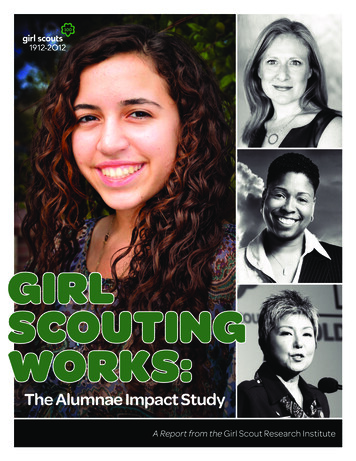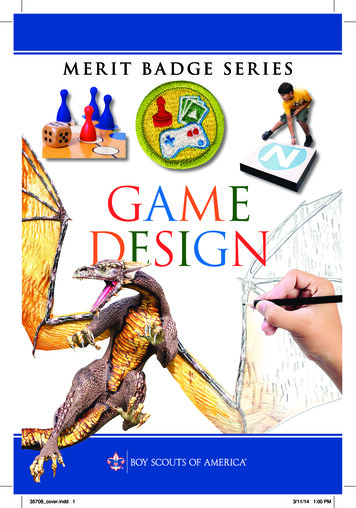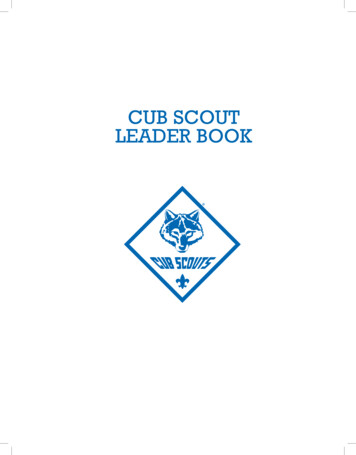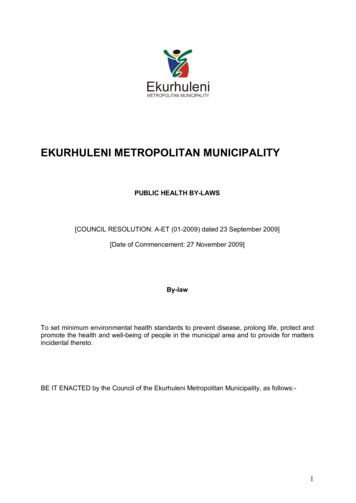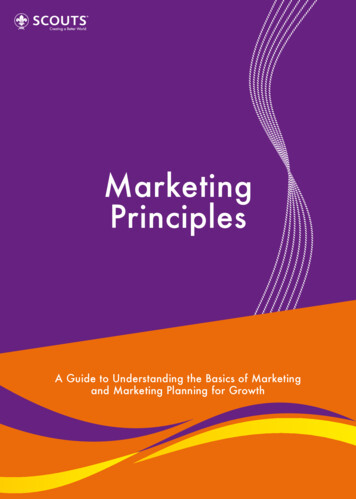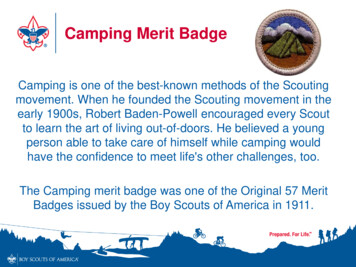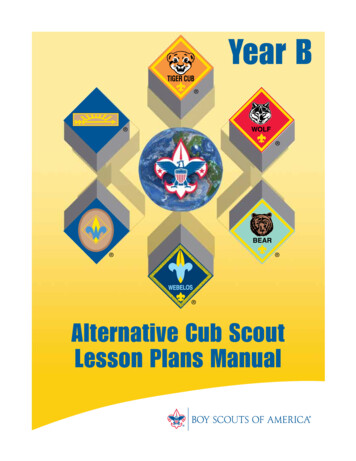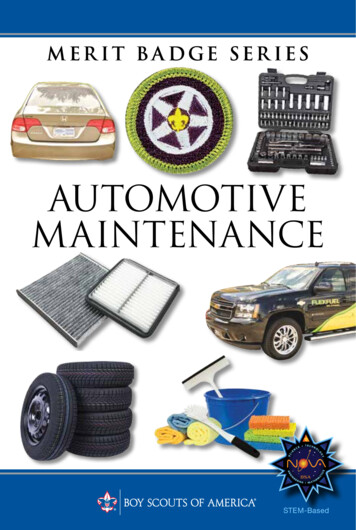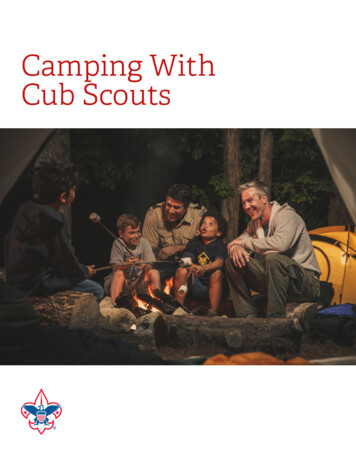
Transcription
PUBLICHEALTH
BOY SCOUTS OF AMERICAMERIT BADGE SERIESPUBLIC HEALTH“Enhancing our youths’ competitive edge through merit badges”
Requirements1. Explain what public health is. Explain how Escherichia coli(E. coli), tetanus, AIDS, encephalitis, salmonellosis, Lymedisease, and coronavirus (COVID-19) are contracted. Then,pick any four of the following diseases and explain howeach one is contracted and possibly prevented: gonorrhea,West Nile virus, botulism, influenza, syphilis, hepatitis,emphysema, meningitis, herpes, lead poisoning. For all10 diseases, explain the type or form of the disease (viral,bacterial, environmental, toxin), any possible vectors fortransmission, ways to help prevent exposure or the spreadof infection, and available treatments.2. Do the following:a. Explain the meaning of immunization.b. Name eight diseases against which a young child shouldbe immunized, two diseases against which everyoneshould be reimmunized periodically, and oneimmunization everyone should receive annually.c. Using the list of diseases and conditions in requirement1, discuss with your counselor those which currentlyhave no immunization available.3. Discuss the importance of safe drinking water in terms of thespread of disease. Then, demonstrate two ways for makingwater safe to drink that can be used while at camp. In yourdemonstration, explain how dishes and utensils should bewashed, dried, and kept sanitary at home and in camp.35935ISBN 978-0-8395-0120-6 2021 Boy Scouts of America2021 Printing
4. Explain what a vector is and how insects and rodents canbe controlled in your home, in your community, and atcamp. Tell why this is important. In your discussion, explainwhich vectors can be easily controlled by individuals andwhich ones require long-term, collective action.5. With your parent’s and counselor’s approval, do ONE ofthe following:a. Visit a municipal wastewater treatment facility or asolid-waste management operation in your community.(1) Describe how the facility safely treats and disposesof sewage or solid waste.(2) Discuss your visit and what you learned withyour counselor.(3) Describe how sewage and solid waste should bedisposed of under wilderness camping conditions.b. Visit a food service facility, such as a restaurant orschool cafeteria.(1) Observe food preparation, handling, andstorage. Learn how the facility keeps food frombecoming contaminated.(2) Find out what conditions allow microorganisms tomultiply in food, what can be done to help preventthem from growing and spreading, and how tokill them.(3) Discuss the importance of using a thermometer tocheck food temperatures.(4) Discuss your visit and what you learned withyour counselor.6. Do the following:a. Describe the health dangers from air, water, andnoise pollution.b. Describe health dangers from tobacco use and alcoholand drug abuse.c. Describe the health dangers from abusing illegal andprescription drugs.PUBLIC HEALTH 3
7. With your parent’s and counselor’s approval, do ONE ofthe following:a. Visit your city, county, or state public health agency.b. Familiarize yourself with your city, county, or statehealth agency’s website.After completing either 7a or 7b, do the following:(1) Compare the four leading causes of mortality(death) in your community for any of the pastfive years with the four leading causes of diseasein your community. Explain how the public healthagency you visited is trying to reduce the mortalityand morbidity rates of these leading causes ofillness and death.(2) Explain the role of your health agency as it relatesto the outbreak of diseases.(3) Discuss the kinds of public assistance the agencyis able to provide in case of disasters such as floods,storms, tornadoes, earthquakes, and other acts ofdestruction. Your discussion can include the cleanupnecessary after the disaster.8. Pick a profession in the public health sector that interestsyou. Find out the education, training, and experiencerequired to work in this profession. Discuss what youlearn with your counselor.4 PUBLIC HEALTH
.ResourcesResourcesScouting LiteratureScouts BSA Handbook for Boys; ScoutsBSA Handbook for Girls; Fieldbook;Animal Science, Camping, Citizenshipin the Community, Citizenship inthe Nation, Citizenship in the World,Cooking, Dentistry, EmergencyPreparedness, Environmental Science,First Aid, Medicine, Safety, Search andRescue, and Soil and Water Conservationmerit badge pamphletsWith your parent’s permission, visitthe Boy Scouts of America’s officialretail website, www.scoutshop.org,for a complete listing of all meritbadge pamphlets and other helpfulScouting materials and supplies.Giblin, James Cross. When PlagueStrikes: The Black Death, Smallpox,AIDS. HarperCollins, 1995.Gittleman, Ann Louise. Guess WhatCame to Dinner? Parasites and YourHealth. Avery, 2001.Grant, Pamela. Water. ThamesidePress, 2000.Marrin, Albert. Dr. Jenner and theSpeckled Monster: The Search for theSmallpox Vaccine. Dutton, 2002.Nardo, Don. Vaccines. Lucent, 2001.Pickett, George E. Opportunities inPublic Health Careers. VGM CareerHorizons, 1995.BooksStewart, Gail. Teens With Cancer.Lucent, 2001.Altman, Linda Jacobs. Plague andPestilence: A History of InfectiousDisease. Enslow, 1998.White, Katherine. Everything You Needto Know About AIDS and HIV.Rosen, 2001.American Medical Association. HealthCare Almanac: Every Person’s Guideto the Thoughtful and PracticalSides of Medicine. AmericanMedical Association, 1998.Yount, Lisa. Disease Detectives. Lucent,2001.Friedlander, Mark P. Outbreak: DiseaseDetectives at Work. Lerner, 2000.PUBLIC HEALTH 5
Resources.Organizations and WebsitesCenters for Disease Controland Prevention1600 Clifton RoadAtlanta, GA 30333Toll-free telephone: 800-311-3435Website: www.cdc.govEnvironmental Protection AgencyAriel Rios Building1200 Pennsylvania Ave. NWWashington, DC 20460Telephone: 202-272-0167Website: www.epa.govNational Institutes of Health9000 Rockville PikeBethesda, MD 20892Telephone: 301-496-4000Website: www.nih.govOffice of Disease Prevention andHealth Promotion1101 Wootton Parkway, Suite LL100Rockville, MD 20852Telephone: 240-453-8280Website: www.health.govU.S. Department of Health andHuman Services200 Independence Ave. SWWashington, DC 20201Telephone: 202-619-0257Website: www.hhs.govU.S. Food and Drug Administration10903 New Hampshire Ave.Silver Spring, MD 20993Toll-free telephone: 888-463-6332Website: www.fda.gov6 PUBLIC HEALTHU.S. Public Health ServiceCommissioned Corps1101 Wootton Parkway, Suite LL100Rockville, MD 20852Toll-free telephone: 800-279-1605Website: http://www.usphs.govWorld Health OrganizationWebsite: http://www.who.intAcknowledgmentsThe Boy Scouts of America isthankful to Dr. William C. Reeves forhis help in updating the 2014 printingof the Public Health merit badge pamphlet. The BSA also thanks the following subject experts for their assistancewith updating the 2005 edition: Eric J.Pyle, Ph.D., Depart ment of EducationTheory and Practice, West VirginiaUniversity; Gerald F. Pyle, Ph.D.,Department of Health Promotionsand Kinesiology, University of NorthCarolina–Charlotte; and Richard W.Klomp, Information ManagementTeam, Centers for Disease Controland Prevention.Thanks to the Centers for DiseaseControl and Prevention, Atlanta,Georgia, for providing the information found in the “RecommendedImmunization Schedule.”The Boy Scouts of America isgrateful to the men and women serving on the National Merit BadgeSubcommittee and the subject expertson the BSA Health & Safety SupportCommittee for the improvements madein updating this pamphlet.
of the Public Health merit badge pam-phlet. The BSA also thanks the follow-ing subject experts for their assistance with updating the 2005 edition: Eric J. Pyle, Ph.D., Department of Education Theory and Practice, West Virginia University; Gerald F. Pyle, Ph.D., Department of Health Promotions and Kinesiology, University of North
